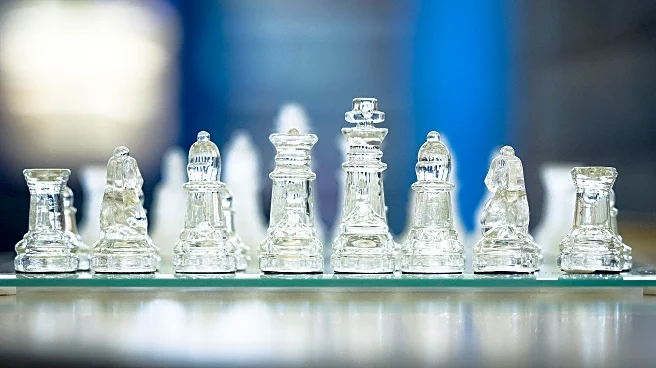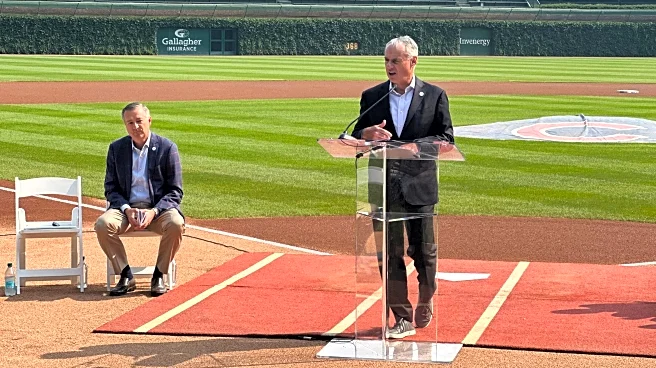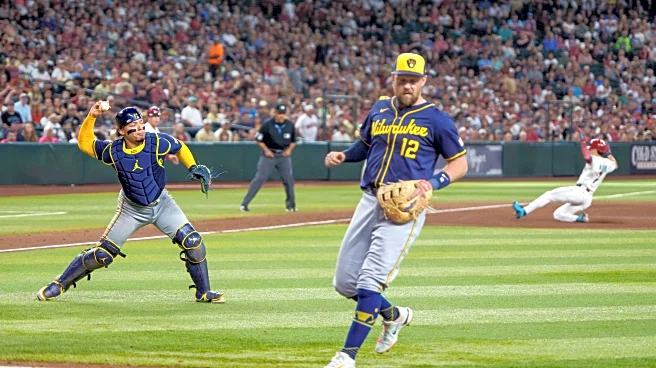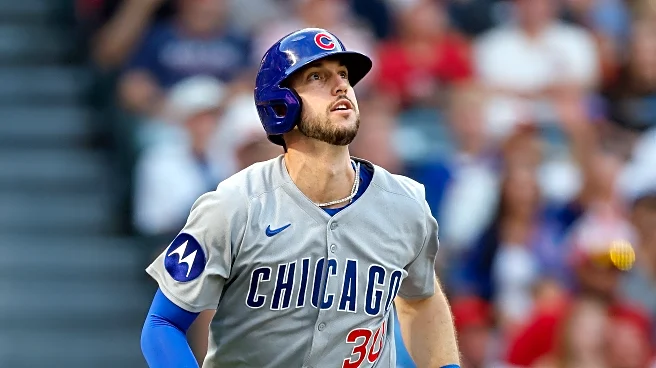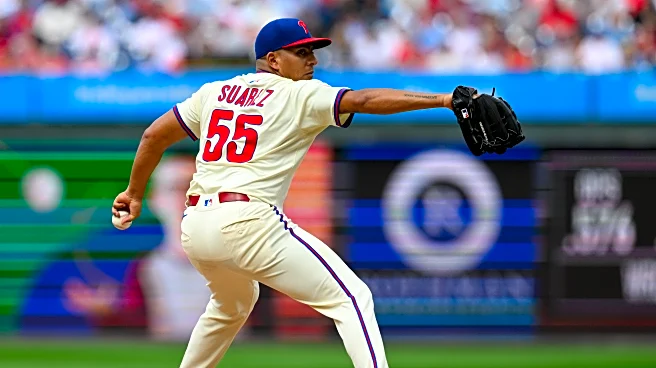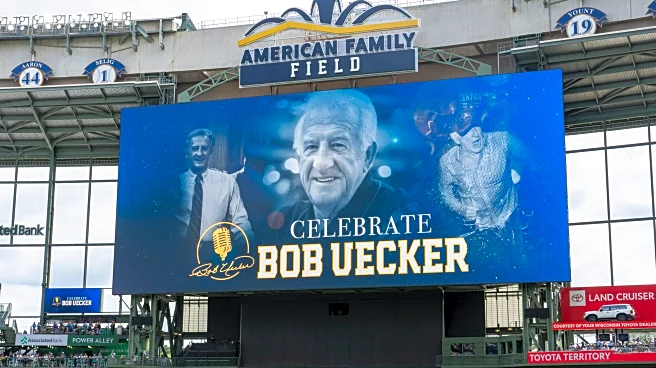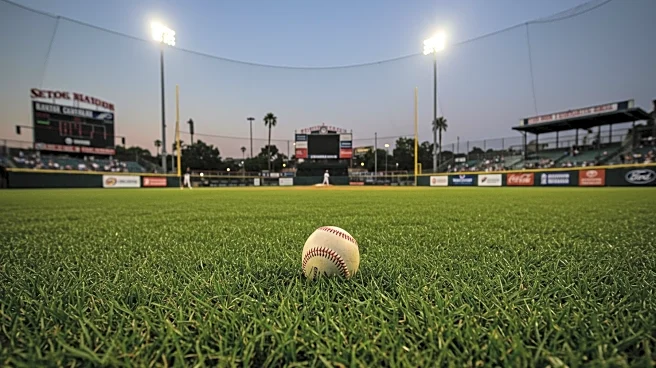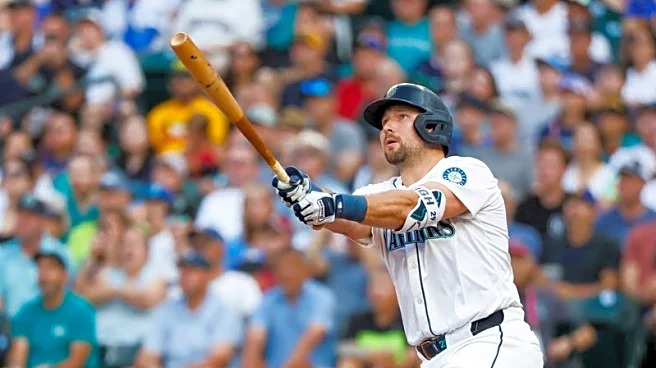
Today, we are going to play a game of 3-dimensional chess. Ok, not really. I’m going to use the 3-dimensional chess metaphor to start down the road of anticipating the Cardinal’s strategic thinking in terms of talent acquisition. No, this isn’t going to be an article about the trade deadline (although it could be), but it may inform a little bit about what they might actually be looking to do. In playing 3-dimensional chess, we are looking at something a bit more complicated than “buyer” or “seller”.
I’ll explain.
First, I want to describe 3 planning dimensions I think the Cardinals are operating on. There are likely more, but it would take a tome to corral them all. I’m going to focus on three that I expect to shift some as the management transition occurs over the next 90 days.
Dimension#1 is talent acquisition via the draft-and-development route, including the international free agent market (IFA). The pieces on this board are the positions they need to fill and the talent in the pipeline they have to fill them with. Really, on this level, they are competing with themselves, needing to find ways to get better via the draft and the IFA market, and the subsequent development processes. There are two tricks in this dimension … one, moves you make today often don’t materialize (success or failure) for years, and two, the draft and IFA markets have what they have to offer, irrespective of what the Cardinals might need, or think they might need. Thus begets the draft maxim, just draft the best player available and move on.
Dimension#2 deals with the player trade and free agent market(s) and money (the free agent market being the proxy for talent acquisition cost) for filling in the positional and talent gaps. This is a playing board stacked above the first. The pieces are the same, positional and need based. If you can’t accomplish the right move on the first level, you try this one. This dimension is tricky because the market and acquisition costs aren’t reacting to the Cardinal moves, the Cardinals are reacting to the market in terms of what the market has to offer and at what cost. This avenue is where the Cardinals move their pieces to cover needs that are unfulfilled by the draft-and-development pipeline. One thing I am curious about (that will take some time to unfold), is whether the Cardinals modernize their FA approach. Deferred money and big bonuses are coin of the realm now. Do they adapt or keep their more conservative approach where they substitute NTCs for actual cash? And do they pursue real talent, or swim in the shallow end, chasing Pawns around the board?
Dimension#3 is the competitive level, where the Cardinals consider their pieces against their local competition (the NL Central). This part also gets tricky, because those guys are also moving their pieces, both in reaction to the Cardinals and in reaction to other forces.
All the layers interplay. Moves made on one layer affect each other and are all influenced by a fourth dimension of time. For example, if a player such as Mathew Liberatore suddenly emerges out of the development pipeline, that affects how the Cardinals size-up against their local competition and what they need from the marketplace. Lest we forget, one Mathew Liberatore came to the Cardinals from the trade market, via a prospect-for-prospect trade made some time ago. Not that everyone remembers, but Tink Hence was the result of the Competitive Round draft pick they picked up in that same trade, which seems like forever ago.
The new Cardinal management team is tasked with rebuilding the development side of the house, essentially re-investing in an area that has been allowed to erode over the years. The undoing of the erosion could also take years. Of course, they’d like to remain competitive at the same time but doing both might be a bit tricky. The outgoing management team has spent the last few years making moves in an attempt to get that one last piece that vaults them into contention, to marginal degrees of success. As we see with the 2025 edition, this team is just shy of being truly playoff competitive. It is as if 1 more piece at the MLB level would do it (say, a heavy hitting right fielder). Except, acquiring that one last piece doesn’t occur in a vacuum, it affects all 3 dimensions over different time scales (see: Liberator, M. or Hence, T.). To try to acquire said piece for 2025 would deplete resources elsewhere and compromise future competitiveness. This is not an easy rubics cube to solve (Oh, gosh, now I’ve wandered into a different metaphor that is really more 3-dimensional tic-tac-toe than it is chess).
When considering what to do next (such as the trade deadline), the strategic thinking teams try to make moves that advance the team’s goals across all dimensions. It never works out that perfectly, but that is the goal. They also consider where they would be at, across all dimensions, when a deal is done.
At the first dimension, the new management team inherits an OK, but not great minor league system that has some good prospects but is bereft of top-end talent (we will talk about that catcher named Rainel in a minute).
In this dimensional view, we’ll start with an assessment that the Cardinal’s pipeline looks deep in the catching position. While it is hard to forecast who will do well and who will not, they have made draft/IFA moves to have enough talent that the Cardinals can expect to have cost-controlled catchers available to the MLB team for quite some time into the future. This seems great, but it presents both an opportunity and a challenge. The opportunity is obvious. With confidence that they probably don’t need to plan to trade for or sign FA catchers, they can focus their key FA and trade moves (done in dimension#2) in other positions. This is good. The challenge here is that the market doesn’t value catchers highly and so the “savings” from having cost-controlled talent at C really isn’t all that special and likewise doesn’t offer them much leverage in the trade market either. In the chess analogy, how to approach their catchers’ depth represents the movement of Pawns. In the third dimension (the competition), having the best catcher (a Pawn) in the Division might not be all that advantageous, if the other teams in their orbit have the best outfield (Tucker, PCA, Happ), or the best pitching (Abbott, Hunter, Singer or maybe Jones, Keller, Skenes). The other teams are moving in with Queens and Rooks, and the Cardinals must develop a strategy to counter. Now, Pawns are an important part of the chess game and can be useful, one just has to have a cohesive strategy to win. This strategy must incorporate not only Pawns but other higher leverage pieces as well, across all 3 dimensions. New thinking will hopefully beget a more successful strategy than the past few seasons have revealed.
A similar scenario plays out in another area of system-wide strength for the Cardinals. Second base. Donovan occupies that spot, Gorman does, too. Wetherholt is coming, and Saggese sits in between. Similar story. Good depth, cost-controllable talent for the foreseeable future. The 2nd and 3rd dimension story is similar. The trade market doesn’t have a high value for cost-controlled second baseman, and neither does the FA market. As a result, the opportunities here aren’t really all that rich. It’s not nothing, but the reality is the Cardinals system (dimension#1) is strong where they could most afford to be weak. Ie., those areas where acquiring talent via trade or FA market is not all that costly (dimension#2).
The third dimension is fascinating. The Cubs are much like the Cardinals, only they have Tucker (for this year) and PCA. Those two are hard for the Cardinals to match up with, particularly with the shortage of outfield talent in their system. But they seem to have the same pitch-to-contact pitching philosophy as the Cubs. Same relative level of payroll investment. Same emphasis on LH power bats. In other words, the chess pieces will move the same until someone makes a mistake.
The Brewers are supreme at putting together cheap, cost-controlled talent that meshes and wins. They’ve been better at drafting pitching recently (than the Cardinals) and they’ve been more aggressive at making trades, such as Adames (in), Williams and Hader (out). Hader is a phenomenal story. They picked him up from the Astros in a deadline deal (for Carlos Gomez) got 5 years of production, then swapped him out for more prospects. It’s hard to say how the Cardinals could out-maneuver them. They should find out.
The Reds appear to be putting together some good top-end talent, but don’t quite have the supporting cast. The Cardinals can strive to be better at a bunch of positions than the Reds and not worry that the Reds SS is one of the most exciting players in baseball. The Cardinals have a shortstop, too. I’ve heard he is ok.
Overall, other than PCA, Cruz, De La Cruz, and Skenes, none of the other NL Central teams have premium talents (after this year) that should make the Cardinals sweat. They are all pretty evenly matched, so in that third dimension, incremental moves (if well done) can be meaningful in terms of competing. If they weren’t the Pirates, I’d be most worried about the pitching strength of Skenes, Jones, Keller, but the Pirates will mismanage that somehow and remain back of the pack.
A lot of time will be spent dissecting what the Cardinals did at this trade deadline. Realistically, given the typical returns for trading an expiring contract, these could be considered pawn moves, too. Will these prospects help? Who knows? Maybe a coin flip. The result is sure to be less than fully satisfying, as most Pawn moves are.
For my money, the more fascinating thing is … what are they going to do with their NTC and arb-eligible players this off-season? With Nootbar and Donovan, they are entering the period where those guys are locks to be here only in the short-term (2 years or less). Contreras and Arenado, as well, for different reasons. As one starts thinking in the time scale dimension, one can realize that the end of the 2027 season will be represent a significant turnover of the roster, in terms of departing talent and expiring contracts.
Some of you will say trading Arenado ahead of his contract expiring (if they can) and moving Gorman to third won’t worsen their competitive posture, especially relative to other NL Central teams. Ignoring the NTC and Arenado’s personal preferences (for a moment, just as a mental exercise), I wouldn’t disagree with that position. In the sense moving him won’t make them worse. But it’s also unlikely to make them better, and ergo, they don’t advance along any of the dimensions discussed above. You ask…What about the money savings? After this year, the Cardinals will owe Arenado $37m (less if you discount the deferrals). Assuming they would need to contribute $15m-$20m in cash to move him, that would allow them to save ~$20m, which will most definitely not buy them a RH power hitter (viewing Tucker as a $300m acquisition here, $20m seems kinda paltry, huh?). $20m won’t even buy you one year of Sonny Gray. So whatever benefit of $$ re-allocation would occur, it would seem inconsequential.
What’s a GM/POBO to do? Any moves they make, be it at this trade deadline or this winter or whenever, need to advance them across all these dimensions.
A couple of strategies that might be considered are:
1. For the draft – Acquiring talent (through the IFA or draft) that focuses more on the premium positions (ie. not catcher or second base).
2. For the trade deadline and offseason – To the extent they can, leverage their depth at catcher and second base to re-allocate talent to other areas – particularly the low-hanging fruit (like Right Field), or the emerging mid-term needs (discussed below).
3. Decide now if they are going to have a deeper rebuild and if so, consider moving Nootbar, Donovan, and some of the pitchers.
One thing the Cardinals need to do is start thinking multiple moves down the road, instead of just trying to fill a particular gap right now and choosing the best of a bad lot to do so (thinking Dexter Fowler here). In another example, waiting until the end of 2022 to address their retiring Hall-of-Fame catcher and finding Contreras was the only realistic option. The reality is, the market doesn’t usually provide you what you need, when you need it, at the price you are willing to pay. If you aren’t able (or willing) to pay, then the strategy is to accumulate talent (or money) ahead of time, so you can pounce on what you really need when it becomes available, which may not be exactly when you need it. Think of this strategy as aiming to have an over-abundance of controllable talent instead of just enough. One thing 2025 has taught everyone … managing the over-abundance (ie. the provisioning of runway) at the macro-level works itself out. Individuals may not get all the runway they want, but team performance works out ok. And that is the goal, right?
On the idea of accumulating talent when it is available, instead of restricting to only when they have an opening, we can look to third base. The Cardinals could consider themselves well covered in cost-controlled talent at Third Base through the 2028 season (when Gorman hits FA). And do nothing. Cost controlled doesn’t necessarily mean “low-cost” in this case, but it is controlled and certain. No openings or needs here. But they clearly do not have a third baseman anywhere in the pipeline, so this is an area where the market will need to meet their needs, but it is uncertain if the 2028 FA crop will include such a third baseman. Who knows? Instead, this off-season (or even this trade deadline) might well be the time to start identifying who they might target and then consider using this season’s pending FA (or some arb-eligible players such as Donovan) as trade bait to acquire talent they can later use to acquire that third baseman they are going to need. And if that third baseman becomes available and gets acquired in 2026 or 2027, so be it. The Cardinals survived Ozzie Smith’s pouting when they acquired Royce Clayton before he was ready to retire, they could survive having Arenado’s or Gorman’s replacement before they depart.
In another scenario, the Cardinals likely recognize that Contreras’ contract expires at the end of the 2027 season, alongside Arenado. Similar story. They could conclude they are reasonably covered through 2028 (until Burly hits free agency), but the pipeline for first basemen is no different than for third basemen in the Cardinal system. The cupboard is bare. Doing nothing throws themselves on the mercy of the market in 2028, or they can start accumulating talent (or money) now for this eventuality.
It takes no special analytical capability to understand the outfield talent needs to be improved upon throughout the system. It will likely take good drafting, IFA signings, trades and free agency to fix the holes here. Of course, if Scott improves more and Walker or Baez emerges, the equation changes, but even if that happens they just flat need more good outfielders in the pipeline.
Pitching is another item. There isn’t much chess strategy here. Obtain as much as you can, when you can get it, because there is never enough. They do need to decide if they are going to keep the pitch-to-contact philosophy. If they do, they need to find a way to get high-end arms at least for the bullpen. It’s like they need to be able to develop along two pathways, and not just choose one.
It’s actually easy to imagine the different strategic approaches this team could take. It is less easy to predict which one they will choose, or when it will become clear when they have chosen. The upcoming draft, the trade deadline and this next off-season should be telling in this regard.
If I had to predict, I’d say they narrow down to two choices … one, a deeper rebuild or two seek a capital infusion that allows them to supplement the major league roster while they rebuild the minor league system. Such an infusion can’t come at the expense of the minor league system like it did last time. Whether ownership buys off on that is anyone’s guess. If they don’t, I can see treading water for years as the unpalatable outcome.
